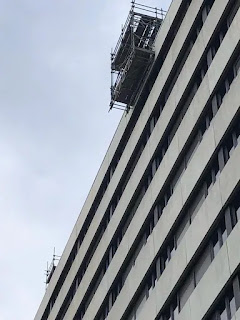Transition to New UK Roofing Standards and Their Impact on Solar Installations
In August 2014, the United Kingdom updated its roofing standards with the release of BS 5534:2014. This marked a significant shift in the industry, as the previous version was withdrawn in February 2015, allowing for a transitional period to complete ongoing projects.
While building regulations do not explicitly mandate compliance with BS 5534, most tile and slate manufacturers align their installation guidelines with this standard. Moreover, architects and designers frequently reference it in their project specifications, and insurance warranty providers, such as NHBC, require adherence to the standard (as outlined in section 7 of the NHBC technical document).
Consequently, the majority of new roofs in the UK now conform to BS 5534, which has implications for the installation of solar panels on these roofs.
Enhanced Underlay Fixing Underlay plays a crucial role in resisting wind-induced pressure differences across the roof. Inadequate securing of the underlay can cause it to balloon and exert pressure on the underside of tiles or slates. The updated standard provides guidance on securing underlay by either covering the bottom edge with a batten or sealing the laps with double-sided adhesive tape.
One challenge arises with solar installations involving wiring passed through the underlay's laps. The adhesive tape used for securing the laps is so effective that attempting to peel it off may damage the underlay. Consequently, installers might be tempted to cut through the underlay to pass cables, instead of the more time-consuming option of routing them to the roof's top and into the building through the ridge vent.
Every Tile Needs a Nail BS 5534:2014 introduces an updated wind speed map, reflecting increased wind speeds compared to the previous version. This change aligns with European standards and is likely due to the heightened risk of extreme weather events in our warming planet. As a result, almost all roofs now require every single tile to be mechanically fastened to the tile battens.
For roofs laid according to this new standard, retro-fitting an above-roof solar system becomes significantly more challenging. In the past, with loose-laid roofs (where only every fourth course of tiles was fixed), installers could easily slide tiles for bracket installation or walking on the roof. However, with the new standard, this option is no longer viable. Careful measures are needed to avoid damaging the roof, necessitating the use of boards or roof ladders for access. Installing roof hooks may involve removing tiles, using adhesive to replace the final tile, and is more time-consuming. Installers may even find it easier to replace a large area of tiles with a roof-integrated solar system.
Over time, as more UK homes are built or have their roofs replaced in line with the updated standard, it will become less common to encounter loose-laid tiles. Solar installers should be cautious when quoting jobs for homes built in recent years.
For solar installers operating in the new build sector, the impact is immediate. With nailed roofs, the only option is to install an above-roof solar system after the roofing contractor has battened the roof but before tiling, requiring an additional site visit. Even then, running cables into the building becomes challenging without the flexibility to easily remove tiles fixed by the roofer.
It's no surprise that many solar installers in the new build sector now prefer roof integration. Not only are the aesthetics more appealing to customers, but it also offers a hassle-free installation process, requiring only one site visit. Afterward, the roofer can secure the slates or tiles as needed, making the entire process smoother and more efficient.

Comments
Post a Comment